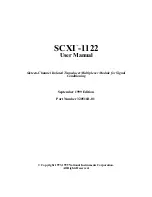
53
If “OL” (overload) appears on the display, you have exceeded the measuring range. See the
chapter “RANGE FUNCTION, MANUAL MEASUREMENT RANGE SELECTION”.
Switching on the multimeter
The multimeter can be turned on and off using the power switch (22) at the back. To switch on, press
the power switch to “I” position. To switch off, press the power switch to “O” position. Always turn the
meter off when it is not in use.
Before working with the meter, you have to supply power to the meter.
The SHIFT / SLEEP button (16)
The SHIFT / SLEEP button (16) is used to switch between the black- / red-labelled functions on the
rotaory control. Select the desired function, then press the SHIFT / SLEEP button (16) to switch
between the black-labelled functions and the red-labelled functions.
Voltage measuring
The maximum permissible voltage in the measuring circuit may not exceed 600 V
in CAT II.
Proceed as follows to measure direct voltages “DC” (V ):
1. Switch on the DMM and select measuring function “V ”. For lower voltages up to 400 mV, select
“mV ”. The indication “DC” shows on the display.
2. Plug the red measuring lead into the
V
ȍ
°CHz measuring jack (17) and the black
measuring lead into the COM measuring jack (18).
3. Now connect the two measuring leads to the object to be measured (battery, circuit, etc.). The red
measuring lead is the positive pole, the black measuring lead is the negative pole.
4. The polarity of the respective measured value is indicated on the display together with the current
measured value.
If a minus “-” appears in front of the measured value for direct voltage, the measured voltage is
negative (or the measuring leads are swapped). The voltage range “V DC/AC” shows an input
impedance of >10 M
ȍ
.
5. After measuring, remove the measuring leads from the measured object and turn off the DMM.
















































